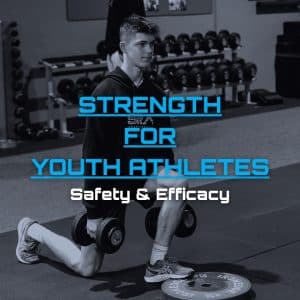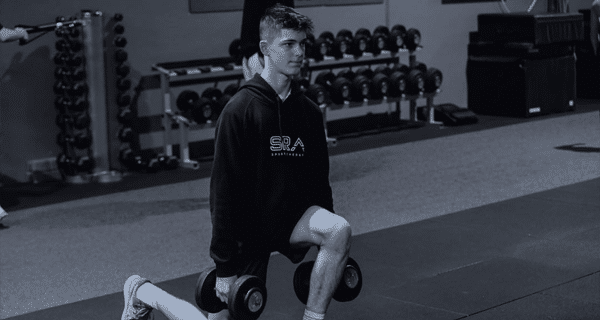
Introduction:
Youth strength and conditioning programs play a pivotal role in providing a foundation for long-term development, overall health and fitness and reducing the risk of injury in young athletes. A common stigma in the athletic world is that lifting weights can stunt an athlete’s growth. This could not be any further from the truth, there is no supportive evidence to back these claims and in actual fact following a well presented resistance program will help build coordination and strength in young athletes.
The Importance of Age-Appropriate Exercises:
Due to hormones, puberty and a variety of factors, you will find all junior athletes to be at different stages of physical, mental and cognitive development, therefore it is important to introduce strength and conditioning appropriately. A well tailored plan should focus on age-appropriate exercises, technique, stability, and functional strength without placing excessive stress on growing joints or tissues. An introduction to strength training should emphasise bodyweight exercises, balance and coordination drills, with low-resistance strength training to help build a solid foundation for future athletic success.
Prioritising Technique:
Teaching athletes proper technique from the beginning is crucial for career longevity and injury prevention. A focus on technique before load ensures youth athletes develop great movement habits that will carry over onto the court/field. Close supervision and feedback during strength and conditioning sessions allows young athletes to learn and execute movement patterns safely and effectively. As they become more competent, an athlete should be encouraged to explore more difficult patterns and movement complexities based on age, experience and strength levels.
Functional Movement:
Functional movement is a common word thrown around in the fitness industry. The idea behind functional movement is to utilise exercises which closely mimic real-life movement patterns to enhance athleticism and reduce the risk of injury. This will commonly include exercises that involve multi-joint coordination and core stability to not only help improve performance but also increase overall body awareness for subconscious decision making in the game.
Bodyweight Training:
For young athletes, bodyweight training can be a great introductory tool for athletic development. We find these exercises play a pivotal role not only when introducing a new strength program but also deep into an athlete’s career and even past retirement. Bodyweight exercises such as push-ups, pull ups, squats, and lunges are all staples in any well periodised program.
Injury Prevention:
Injury prevention should be a primary focus of any youth development program. Dynamic warm-ups, mobility exercises, and prehabilitation exercises targeting common injury-prone areas can help reduce the risk of injuries and keep athletes healthy and active. We like to call these our “vitamins” or our “non-negotiables”. These exercises should look slightly different for each individual across their athletic journey.
Conditioning & Agility:
While strength is important, conditioning and agility should not be neglected. Age-appropriate cardiovascular exercises and agility drills can improve cardiovascular health, endurance, and overall athletic performance. We strongly encourage our athletes to play a variety of sports from a young age to add a number of movement skills and patterns to their belt. As an athlete gets older this is when “specialising” should become considered.
Recovery and Rest:
Adequate rest and recovery is the one variable missed in most athlete development programs. We need to remember that growth happens while we are resting. With youth athletes juggling community, school, representative, state and occasionally national level sports it’s important to monitor and address any early signs of burnout and fatigue.
Conclusion:
Youth strength and conditioning programs are an invaluable investment in the physical, mental and cognitive development of all junior athletes. By prioritising safety, technique, age-appropriate exercises and recovery we can create an environment where young athletes will thrive and reach their full potential both in their chosen sport and also in their professional careers.
References:
- Lloyd, R. S., Oliver, J. L., Faigenbaum, A. D., Howard, R., De Ste Croix, M. B. A., Williams, C. A., Best, T. M., Alvar, B. A., Micheli, L. J., Thomas, D. P., Hatfield, D. L., Cronin, J. B., & Myer, G. D. (2015). Long-term athletic development, part 2: Barriers to success and potential solutions. The Journal of Strength & Conditioning Research, 29(5). https://journals.lww.com/nsca-jscr/Fulltext/2015/05000/Long_Term_Athletic_Development,_Part_2__Barriers.37.aspx
- Lesinski, M., Prieske, O., & Granacher, U. (2016). Effects and dose-response relationships of resistance training on physical performance in youth athletes: a systematic review and meta-analysis. British journal of sports medicine, 50(13), 781–795. https://doi.org/10.1136/bjsports-2015-095497
- Peitz, M., Behringer, M., & Granacher, U. (2018). A systematic review on the effects of resistance and plyometric training on physical fitness in youth- what do comparative studies tell us? PLoS One, 13(10), e0205525. https://doi.org/10.1371/journal.pone.0205525
- Rhodri, S. L., Avery, D. F., Michael, H. S., Jon, L. O., Ian, J., Jeremy, A. M., Clive, B., Kyle, C. P., Teri, M. M., Rick, H., Lee, H., Brian, H., Lyle, J. M., Rod, J., William, J. K., Michael, G. M., Thomas, M. B., Donald, A. C., Brent, A. A., & Gregory, D. M. (2014). Position statement on youth resistance training: The 2014 international consensus. British Journal of Sports Medicine, 48(7), 498. https://doi.org/10.1136/bjsports-2013-092952
- Wegner, M., Amatriain-Fernández, S., Kaulitzky, A., Murillo-Rodriguez, E., Machado, S., & Budde, H. (2020). Systematic review of meta-analyses: Exercise effects on depression in children and adolescents. Front Psychiatry, 11, 81. https://doi.org/10.3389/fpsyt.2020.00081

